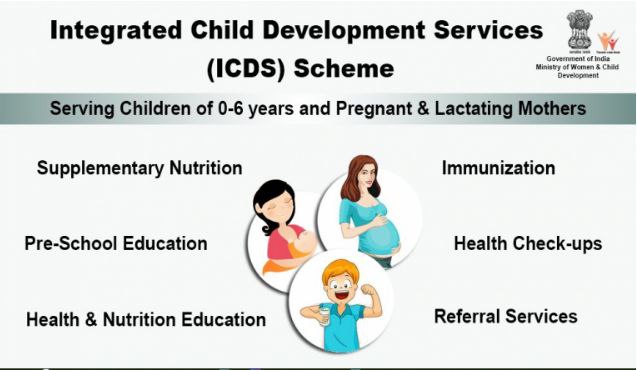
Strengthening the ICDS Scheme
India's high prevalence of stunting, wasting, and anaemia continues to pose public health risks for children and women.
Strengthening the ICDS Scheme
India's high prevalence of stunting, wasting, and anaemia continues to pose public health risks for children and women. India must strengthen its social sector schemes, such as the Integrated Child Development Scheme to tackle this.
• The ICDS targets children aged 0-6 years, pregnant women, and lactating mothers;
• the Programme addresses non-formal preschool education,
• and breaks the cycle of malnutrition, morbidly, and mortality
Empirical research highlights the correlation between early-life poverty, malnutrition, and inadequate stimulation, and later cognitive and economic challenges. Hence, interventions focusing on nutrition, education, and health during early childhood can significantly improve human capital, particularly in developing countries.
Various studies have shown ICDS's positive impact on cognitive achievements, especially among girls and those from economically disadvantaged families. As we commend the remarkable strides made by the ICDS, it is imperative to acknowledge the pressing need for a reassessment of our approaches.
Despite relentless efforts, ICDS still faces the herculean task ameliorating nutritional and health outcomes in the country.
A significant step would be to empower Anganwadi workers. Their roles vary widely from applying modern technology to practicing tasks such as delivering education, managing feeding programmes and working with auxiliary nurse midwives and other healthcare professionals. These workers bear the onus of advancing child nutrition, health and education, as principal operatives under Poshan 2.0.
The operationalisation of the Saksham Anganwadi and Poshan 2.0 hinges on its status as Centrally Sponsored scheme. State governments oversee the execution, management, monitoring and worker recruitment as well. This decentralised approach, guided by region-specific data, promotes efficient implementation.
However, there needs to be additional recruitment to lessen the load of existing Anganwadi workers. Though the cornerstone of ICDS, they are stretched beyond their limits.
This will reap a lot benefits. One, it will lead to better health and education outcomes. Second, the cost of nationwide roll-out of this model is relatively insignificant compared to its potential long-term advantages. Third, new workers coming in will give the exiting ones the space and time to expand their outreach. Last but not the least, it will create job opportunities for millions of women across India.
Though the Center provides funds for Anganwadi workers and helpers, studies have shown a need for further investment in training programmes. Apart from this, infrastructural improvement will help in bridging the gap in implementation of ICDS at different Anganwadi centres. These steps will help unlock the full potential of the ICDS to address the persistent social issues.
